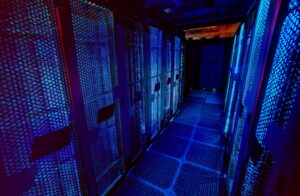On a freezing January night, the third fire alarm blared at a reactor testing station. Firefighters, expecting another false alarm, rushed to respond. However, they soon realized they were confronting a nuclear disaster. The alarm sounded inside “Fire Station Number 1” at the U.S. Army’s National Reactor Testing Station in Idaho. Earlier that night, two false alarms had been triggered in the furnace room of the support building housing a stationary low-power nuclear reactor.
In a facility dedicated to nuclear research, every alarm is taken seriously. The firefighters donned their jackets, boarded the truck, and headed to the site. It was January 3, 1961—a bitterly cold night. On arrival, their first stop was the furnace room, anticipating another false alarm. However, the furnace room alarm was silent, and the sound was coming from another location.
Their attention turned to the main building where the reactor crew worked. Inside, they found an eerily quiet scene. Lights were on, three steaming mugs of coffee sat on a table, but the control room was empty. A blinking red “HIGH RADIATION” alert on the control panel confirmed their worst fears—the alarm was genuine.
Quickly realizing the severity of the situation, the firefighters retrieved air masks and oxygen tanks before entering the reactor building. They ascended the stairs to the reactor’s operating platform—a three-level structure with the reactor at its base, control equipment on the middle platform, and ventilation at the top.
As they climbed, their portable radiation detector surged to its maximum reading of 200 roentgen per hour. A second detector confirmed the high radiation levels. Through a window on the operating platform, they glimpsed a horrifying scene: two crew members, Richard Leroy McKinley and John A. Byrnes, lay lifeless on the floor, their bodies bloodied amidst debris.
Health physicists quickly arrived on the scene. Using advanced radiation detectors, they found levels exceeding 500 roentgen per hour—far beyond lethal for prolonged exposure. Richard McKinley was still alive but gravely injured. Two rescuers managed to carry him out of the building despite equipment malfunctions, but he succumbed to his injuries in the ambulance. The other two crew members, John Byrnes and Richard C. Legg, were already dead.
Initially, Legg’s body was unaccounted for, but a gruesome discovery revealed he had been impaled to the ceiling by debris from the reactor explosion.
The reactor, known as Stationary Low-Power Reactor Number One (SL-1), was an experimental design intended to power remote radar stations. Constructed in 1958, it used highly enriched uranium fuel and was operated by the Army for training purposes. Its structure, a cylindrical steel silo, lacked the containment shell seen in reactors near urban areas, though it effectively contained most radioactive releases during the incident.
The SL-1 reactor operated with control rods to regulate the nuclear chain reaction. During routine maintenance on January 3, a crew member mistakenly withdrew a control rod 20 inches instead of the prescribed two inches. This error triggered “prompt criticality,” a rapid and uncontrolled nuclear reaction. The resulting power surge vaporized fuel and pressurized water, propelling the reactor vessel nine feet into the air and causing a deadly explosion.
Investigators discovered that frequent control rod malfunctions had been reported in the months leading up to the accident, but no action was taken. Congressional hearings later revealed that the project manager was unaware of the issue’s severity. The tragedy underscored the need for improved safety protocols.
In the aftermath, the SL-1 reactor was dismantled, and its radioactive debris was buried near the site. The incident led to stricter reactor safety designs, including the “one stuck rod” criterion to prevent similar disasters. Today, the reactor’s burial site remains a somber reminder of the dangers inherent in nuclear technology.






